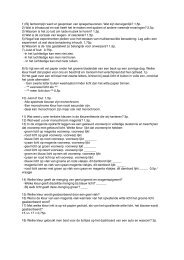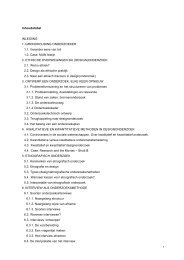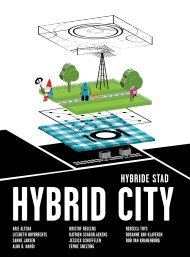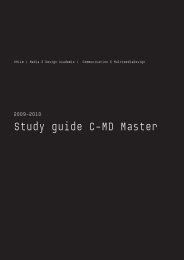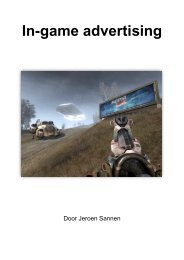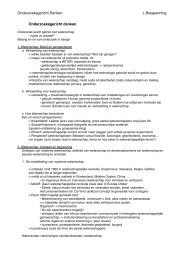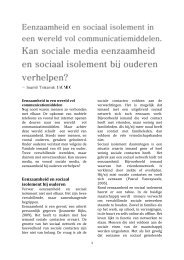Study guide C-MD Master - CMD-Stud - KHLim
Study guide C-MD Master - CMD-Stud - KHLim
Study guide C-MD Master - CMD-Stud - KHLim
Create successful ePaper yourself
Turn your PDF publications into a flip-book with our unique Google optimized e-Paper software.
Learning objectives<br />
(Public) Space aims at enhancing your knowledge of (new) media<br />
art and the way in which it interacts with technology, society and<br />
science. The students are stimulated to experiment with different<br />
technologies that might prove useful to create media projects in<br />
the public space. Experimentation and the exploration of new and<br />
existing frames of reference are crucial to realise a personal media<br />
project that interacts with a specific space and the people that<br />
inhabit it.<br />
Content<br />
Ubiquitous and pervasive computing are no longer terms that try<br />
to describe future developments. Rather they explain how technology<br />
surrounds us in our present day society, although we are not<br />
always aware of that technology. Because technology is everywhere<br />
around us and is becoming more and more invisibly so, the<br />
difference between the physical and virtual reality is collapsing.<br />
Data from mobile phones with built-in GPS receivers can be linked<br />
with online data easily allowing the creation of a virtual layer on top<br />
of realty.<br />
This hybrid state of the world also has social consequences. Physical<br />
contact is no longer a prerequisite to meeting people and the<br />
internet has become fast and efficient communication platform<br />
for collaborative projects on a worldwide level, but also on a local<br />
level. In addition to that ease of communication and collaboration<br />
the rise of the open source philosophy has made the development<br />
of a lot of complex projects more easy and accessible to more<br />
people<br />
(Public) Space is situated at the crossroads of all these changing<br />
possibilities. The module will zoom in on the possibilities of collaborative<br />
networks and the results of participatory projects. The<br />
social position of new media arts will be discussed and the tension<br />
between space and place will be clarified. (Public) Space offers<br />
more than a theoretical framework. The students will be <strong>guide</strong>d<br />
to develop an individual project that combines insights from the<br />
lectures with personal experimentation.<br />
Evaluation<br />
40% theoretical exam<br />
40% project work (technical and conceptual advancement, presentation)<br />
20% process evaluation (presentations, assignments, participation<br />
in class discussions)<br />
There is only one examination period.<br />
Tolerance is however possible.<br />
Educational concept<br />
Lectures, practica, discussions, guest lectures, workshops<br />
<strong><strong>Stud</strong>y</strong> material<br />
Camera, laptop, paper, bricolage materials, rfid tags, sensors, …<br />
Literature<br />
Abrams, Janet e.a. Else/where: Mapping New Cartographies<br />
of Networks and Territories. Univ of Minnesota Pr, 2006. (ISBN<br />
0972969624)<br />
Brouwer, Joke e.a. ARt & D: Research and Development in Art.<br />
V_2, 2005. (ISBN 90-5662-389-3)<br />
Bullivant, Lucy. 4dspace: Interactive Architecture. Wiley-Academy,<br />
2005. (ISBN 9780470090923)<br />
Huybrechts, Liesbeth (red.) Cross-over: Kunst, media en technologie<br />
in Vlaanderen. Lannoo, 2008. (ISBN 978-90-209-7850-6).<br />
Rush, Michael. New Media in Art. Thames & Hudson, 2005. (ISBN<br />
978-0-500-20378-1).<br />
9



